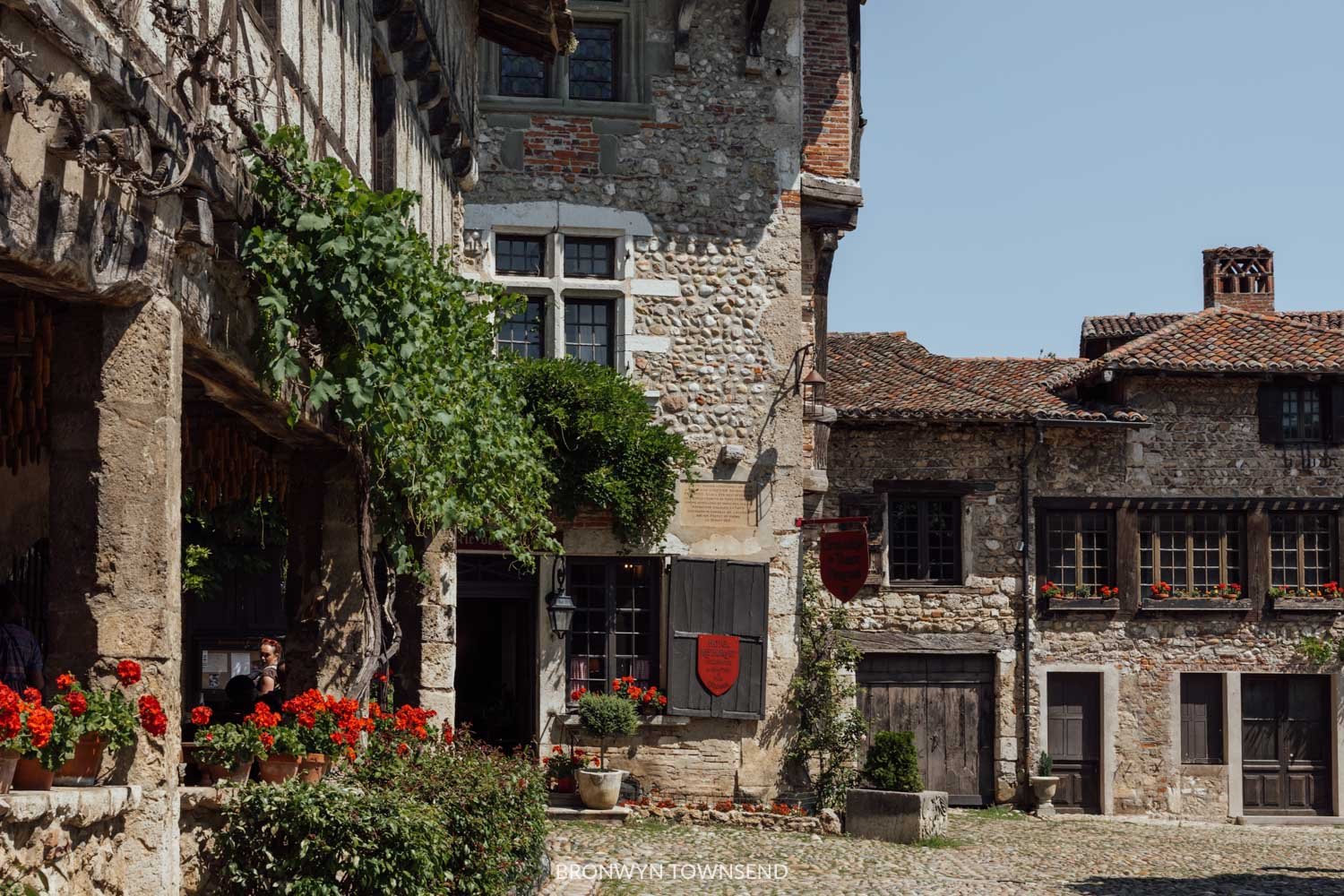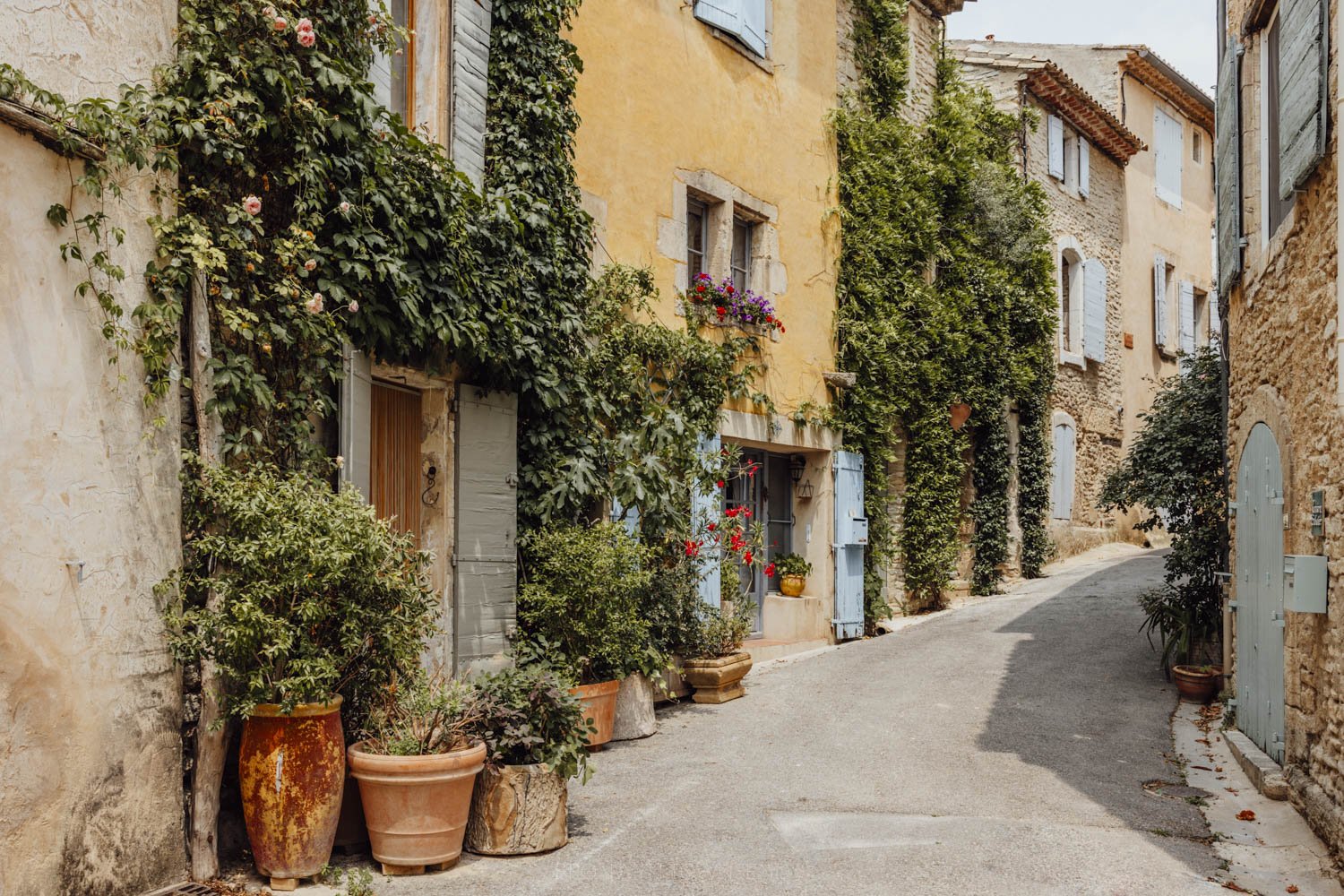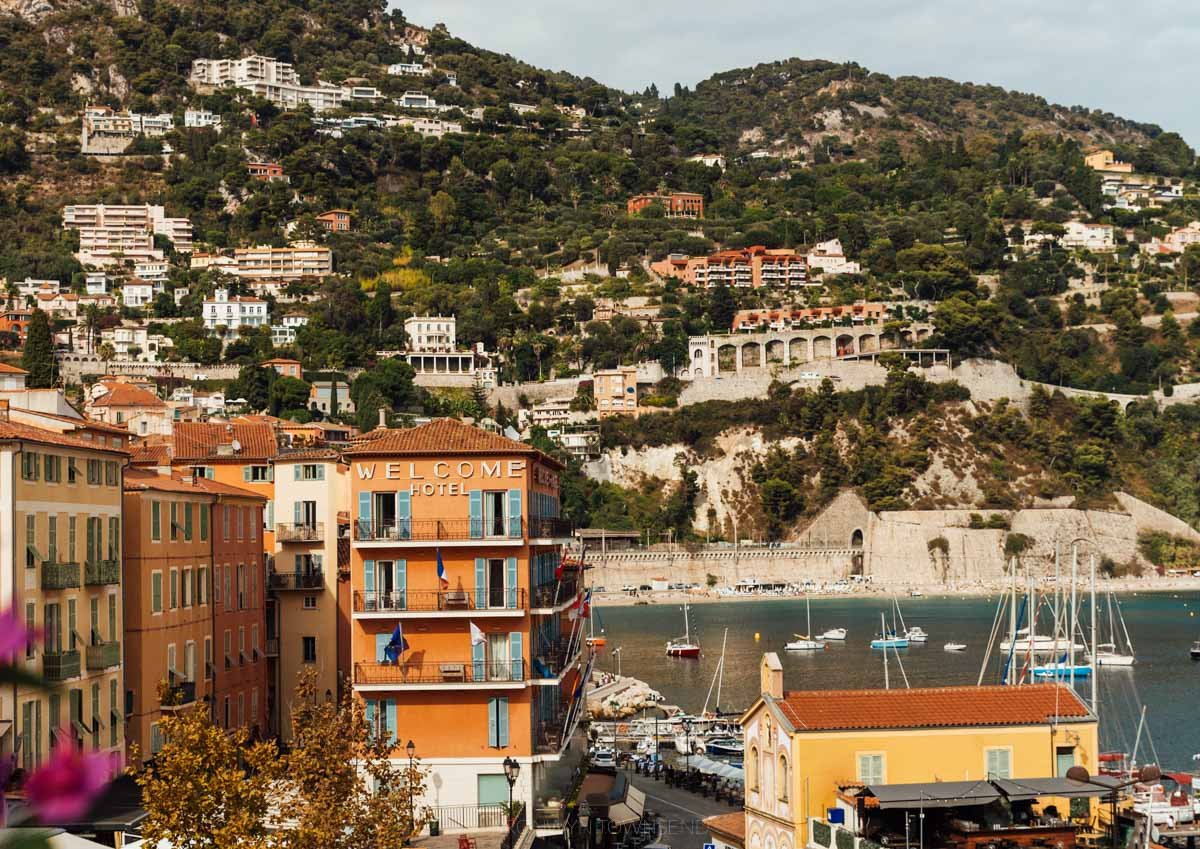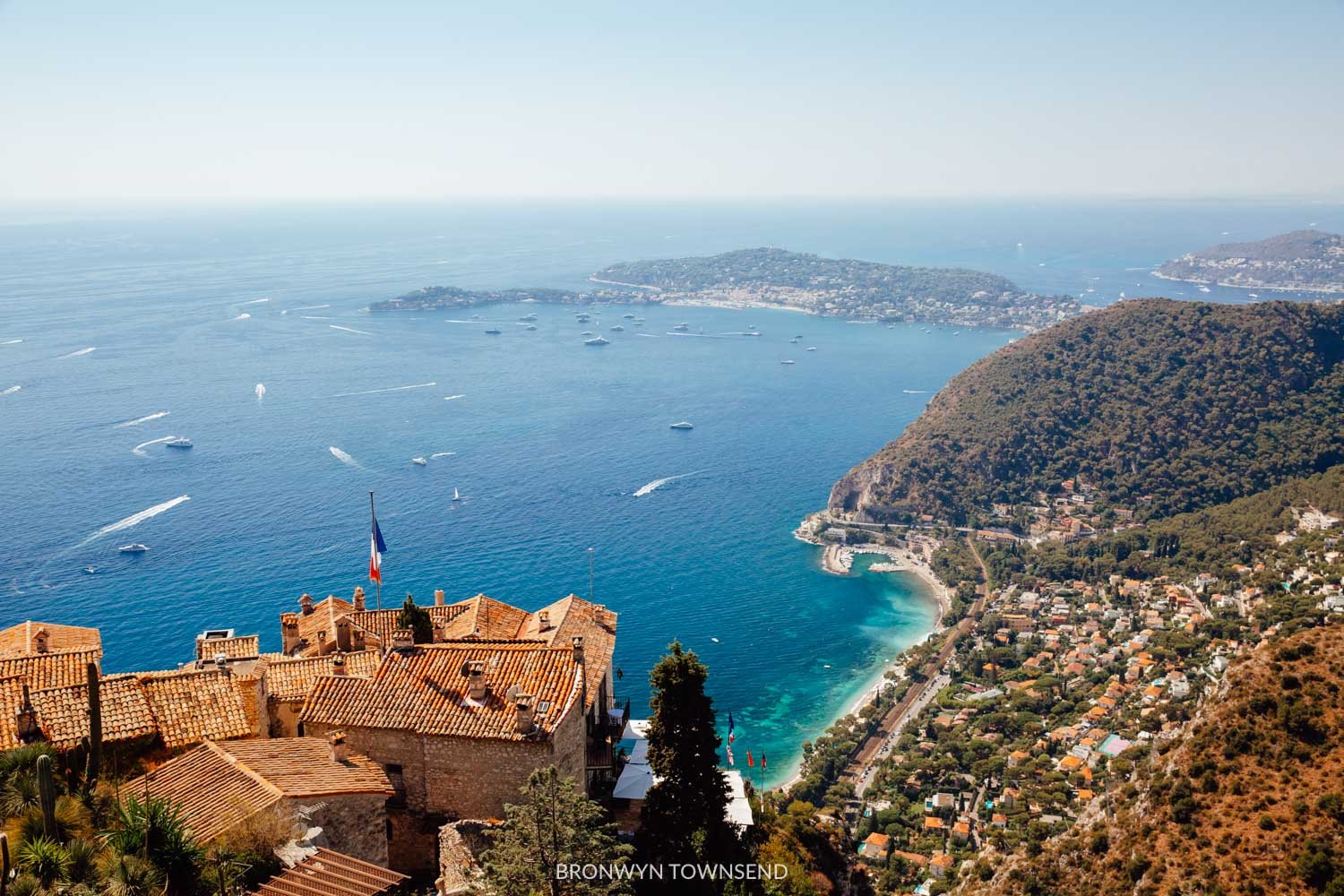A Travel Guide to Perouges, France: The Perfect Day Trip From Lyon
Perouges epitomises medieval France with its cobblestone lanes surrounded by ramparts. A micro-sized hamlet characterised by timber frame houses, Perouges is less than 200 metres wide but brimming with a rich heritage founded by handweavers and hemp farmers. Where hydrangeas and grape vines frame ancient doorways, time stands still in this medieval village.
Perched atop the hill overlooking the Dombes Plateau, the walled town of Perouges is one of France’s most beautiful villages. Brought to prosperity by linen weavers and farmers, it is believed the village was founded by a Gallic colony upon return from Perugia in Italy.
Instantly transporting visitors to the Middle Ages, Perouges embodies all the characteristics you would come to expect in such a town, from the fortress church to Renaissance residences. Among the old stone houses, you can easily imagine an era when knights and fair maidens walked the streets, now exchanged for local inhabitants conserving the authenticity of this medieval treasure.
Despite its rich heritage, the industrial revolution threatened the township’s future when the population dwindled from 1,500 to just 12. Under threat of demolition in the early 20th century, a group of artists and notables created an organisation designed to save the village with the help of Anthelme Thibault the Committee of Old Perouges.
One of France’s most well-preserved medieval villages, the enchanting destination has been used as film sets for movies including The Three Musketeers and Monsieur Vincent.
Where is Perouges, France?
Perouges is a commune situated in the Ain department in the southeast of France, approximately 30km from Lyon. Located in the Rhône-Alpes region, Perouges is part of the township of Meximieux, part of the district of Bourg-en-Bresse.
What to do in Perouges, France
Wander the cobblestone streets
A pint-sized hamlet dressed by blooms overflowing from wooden-shuttered window sills and historic signage hanging above cobbled lanes, Perouges is best explored by meandering its streets slowly.
Set between two medieval gates - the ‘high’ gate and the ‘low’ gate - the charm of this handsome village is retained through careful restoration undertaken in the early 1900s. Taking in the best of what Perouges has to offer, stalls and weavers' dwellings with corbelled facades, fitted with mullioned windows line the cobblestone streets.
The streets have been completely pedestrianised making it easy to enjoy the peaceful atmosphere. We visited on a Sunday in July and still felt like the town had miraculously escaped mass tourism.
Enjoy Place du Tilleul square
The beating heart of Perouges is Place du Tilleul square. Centred around an ancient lime tree, said to have been planted in 1792, known as the Liberty Tree, you can watch the comings and goings of the few locals and other visitors in the sunshine.
Here you will find the 13th-century inn, Old St. George House, and the Museum of Old Perouges. Flanked by several shops selling a range of handcrafted goods made by local artisans, souvenirs from ceramic goods to oven mitts, and the perfect suntrap terrace ideal for a coffee or spritz.
Eat Galette de Perouges
The sugary, buttery, flattened brioche dough treat resembles a pie-like treat. This caramelised dessert was created by Marie Louise Thibaut in 1912 and has been a much-loved treat in the village ever since. Head to Galettes de Perouges and pick up a slice for just €1.80 from the window shop front.
Originally prepared exclusively on ‘Lean Fridays’ otherwise known as Good Friday, Galette de Perouges is made from leavened dough flavoured with lemon, then placed in a preparation based on butter and sugar.
Head to a music festival
A perfectly preserved medieval village might not be the first setting you’d think of for a music festival, but the Printemps de Pérouges is held here annually, showcasing a host of acts from cabaret, stand-up, jazz, blues, and comedy.
A major event in the department of Ain, make the most of it by choosing a day where a show takes place in the evening in the medieval village for a truly magical experience.
Catch the Medieval Festival
Every June, costumed folk bearing outfits fit for knights and princesses descend upon Perouges for the Medieval Festival. Encompassing a collection of entertainment activities including a parade, shows, market, and demonstrations of all types, you can pretend you’ve time travelled back to the Middle Ages.
Soak up the views
Perched at the top of a hill, enjoy panoramic views across the valley below set against the fairytale backdrop complemented by the snow-capped peaks of the French Alps. Rolling green hills spill into patchwork farms undulating to the horizon.
Visiting Perouges | The Essentials
When is the best time to visit Perouges?
The well-preserved nature of this charming village has made it a favourite among those who make the visit. With a population of around 1,200, it can be quiet all year round compared to other tourist hotspots.
Visitors find the best time to visit Perouges to be between April - October when the weather is warmer and the township more lively. December is also popular for the festive season and the quaint Christmas market.
Sundays are the busiest day in Perouges. In April, most of the town’s shops are closed on Wednesdays, so plan your visit accordingly.
How to get to Perouges
Perouges is easily accessible from Lyon, making it the perfect day trip to explore more of the Rhône-Alpes region. The two most convenient ways to reach the village are either by train or car.
Lyon to Perouges by train
If you plan on taking the train, venture to Lyon’s main train station, Lyon Part Dieu to Meximieux - Perouges, the nearest station to Perouges. From the station, the walk to the fortified village takes around 20 minutes. Google will tell you it takes closer to 30 minutes, but it took us less than 20!
There are no public transport options between Meximieux - Perouges station and the medieval village, so you’ll need to follow these instructions to head there on foot.
Follow Av. de Verdun adjacent to the train line toward Rue Marcel Vion, taking a right near the CarreFour service station. Continue across the roundabout onto Rue du Moulin and then right onto Turn right onto Rte de Pérouges. Take another right onto Rte de la Cité which is an uphill walk, from here you will easily see the walls of Perouges medieval village. Keep an eye out after the chocolate factory on your right, where you’ll see a gravel footpath that leads to the lower gate and you will have reached your destination.
There are trains operating every two hours normally, with an average journey time of just 31 minutes. Watch the world pass by as Lyon’s city limits melt into open fields of green and farmhouses pepper the countryside. Tickets start from around €13 for a return journey for a 2nd class ticket. You can pre-purchase your tickets here with Trainline.
Lyon to Perouges by car
Driving from Lyon to Perouges is a convenient way to reach this charming village. Taking only 30 minutes, head onto the A42 and take exit 7 onto D65B. Continue through the first roundabout and at the second take the 4th exit onto D1084. Then take the 1st exit onto Rte de Lyon/D22A heading to Chalamont/Meximieux/Perouges and then a left onto Rte de Pérouges/Rte de Trévoux/D4. From here, it’s a right onto Rte de la Cité, left on Rue de la Prte d'en Haut and then the car park is on your left.
There’s a designated visitor parking lot outside the gated town for €2. The car park is small and during busy periods can fill up quickly, making it difficult to exit too. I recommend carrying coins as not all parking ticket machines are set up to accept card payments.
A perfectly preserved village that has retained the authenticity of the Middle Ages and escapes the heavy-worn tourist trail like much else of Europe, Perouges is an exceptional day trip from Lyon. Be sure to add it to your list when planning your visit to France’s gastronomic capital.





















